Precious is my vote for Best Picture of the year. It is unafraid to reflect the darkest images and moments of real life upon the big screen for us to recoil and react to. Yet, it also offers up a portrait of the human spirit’s near-divine ability to overcome, survive and strengthen through hardship, trials and support. In a perfect world Precious would be seen by everyone because it has something to say and is unafraid to say it.
The story is simple: a sixteen-year-old overweight, illiterate black girl is living in New York with her abusive mother and father, she gets placed into an alternative school and begins the journey towards discovering self-worth and her own spirit. It is set in the 1980s, but it could have taken place last week. Time is inconsequential to this story.
Since Precious is abused, it should go without saying that the film is graphic. There is only one on screen act of sexual abuse, but numerous others are allude and spoken about. And there is scene after scene of mental, emotional and physical abuse from Mo’Nique as Precious’ mother-from-hell, Mary. In an even more perfect world Mo’Nique and Gabourey Sidibe, who plays Precious, will both be Academy Award nominees once those nominations are announced, with one or both of them winning. Their final scene together is so powerful, moving, disturbing and unnervingly realistic that I left the theater feeling like every emotion I could possibly have was in my chest. I left feeling like I had witnessed something powerful and great. I left feeling like I had been hit by a truck.
But more praise should be given to Paula Patton as Precious’ teacher, a guardian angel with her own interesting traits, Lenny Kravtiz making a fine acting debut as a male nurse who shows kindness, love and sympathy to Precious, and Mariah Carey who deglams and goes back to her natural speaking voice for a small supporting role as a social worker.
The film is not all doom-and-gloom though, there is a surprising amount of levity in the scenes dealing with Precious’ alternative school, her inactions with her classmates outside of school and in the fantasies she creates to escape from her depressing reality. These moments drive home that while we can sink to depressingly shocking lows, we can also soar to our highest when we feel loved, that we have worth and that our minds, ideas, imaginings can be given life if we just know what to strive for and how to do it.
Precious
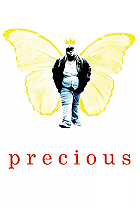 Posted : 15 years, 6 months ago on 6 December 2009 07:27
(A review of Precious)
Posted : 15 years, 6 months ago on 6 December 2009 07:27
(A review of Precious) 0 comments, Reply to this entry
0 comments, Reply to this entry
Where the Wild Things Are
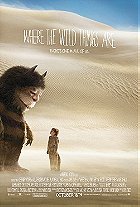 Posted : 15 years, 6 months ago on 6 December 2009 07:27
(A review of Where the Wild Things Are)
Posted : 15 years, 6 months ago on 6 December 2009 07:27
(A review of Where the Wild Things Are)Where the Wild Things Are is a movie future generations will be talking about if there is any cosmic and artistic justice in this world. Why? Because it strikes so deeply at the core of childhood’s fragile and mercurial psyche filled with gloriously beautiful images and heartfelt performances. This is not a children’s film but a film about childhood in every painful and joyous moment.
Our main character is a product of divorce with an emotionally unavailable older sister and a mother who is trying to keep everything afloat. I saw elements of my own childhood in those early scenes, I saw elements of myself in Max. I believe that numerous other will have this exact reaction to the film, if they haven’t already. It was in these early scenes that I knew I was watching one of my favorite films of the year.
Once Max takes his flight of fancy and danger into his imaginative psyche – yes, this is a psychological examination of Max – I was immersed into the film at a level I rarely experience. Only Precious has rivaled it so far this year.
The monsters are not cuddly, despite being furry, but are ferocious and prone to bouts of violence and tantrums. Max is not a precociously adorable little boy, he is prone of bouts of bratty attitude, demanding attention, emotionally internalized and struggling with several feelings at once. Although Max Records is an adorable little child actor, he doesn’t play it for cutesy moments.
And I loved that the film was unafraid to feature extended scenes of little dialogue with the characters all frolicking and playing together, or chasing each other either as a joke or with deadly intentions towards one another, or Max. Or, in one instance, threatening to eat Max. I could go on to explain that each of these monsters are a fragment of his real life and personality, but that is very obvious. And I could go on and say which one is which, but that would ruin the experience.
I loved Where the Wild Things Are. Ignore it’s rating on Rotten Tomatoes and try it out for yourself. If you hate it, fine. But at least support a real work of art when it comes around. Mindless and mind-destroying fare like 2012 and Transformers 2 don’t deserve to win the box office. And they have monopolized it for far too long.
Our main character is a product of divorce with an emotionally unavailable older sister and a mother who is trying to keep everything afloat. I saw elements of my own childhood in those early scenes, I saw elements of myself in Max. I believe that numerous other will have this exact reaction to the film, if they haven’t already. It was in these early scenes that I knew I was watching one of my favorite films of the year.
Once Max takes his flight of fancy and danger into his imaginative psyche – yes, this is a psychological examination of Max – I was immersed into the film at a level I rarely experience. Only Precious has rivaled it so far this year.
The monsters are not cuddly, despite being furry, but are ferocious and prone to bouts of violence and tantrums. Max is not a precociously adorable little boy, he is prone of bouts of bratty attitude, demanding attention, emotionally internalized and struggling with several feelings at once. Although Max Records is an adorable little child actor, he doesn’t play it for cutesy moments.
And I loved that the film was unafraid to feature extended scenes of little dialogue with the characters all frolicking and playing together, or chasing each other either as a joke or with deadly intentions towards one another, or Max. Or, in one instance, threatening to eat Max. I could go on to explain that each of these monsters are a fragment of his real life and personality, but that is very obvious. And I could go on and say which one is which, but that would ruin the experience.
I loved Where the Wild Things Are. Ignore it’s rating on Rotten Tomatoes and try it out for yourself. If you hate it, fine. But at least support a real work of art when it comes around. Mindless and mind-destroying fare like 2012 and Transformers 2 don’t deserve to win the box office. And they have monopolized it for far too long.
 0 comments, Reply to this entry
0 comments, Reply to this entry
Introducing…Save Ferris
 Posted : 15 years, 6 months ago on 2 December 2009 10:41
(A review of Introducing Save Ferris)
Posted : 15 years, 6 months ago on 2 December 2009 10:41
(A review of Introducing Save Ferris)Introducing…Save Ferris did just that way back in 1996, a year before their official debut recording was released. Five of the seven tracks on Introducing were also on It Means Everything. There isn’t much difference between the two, except that the re-recordings have better sound quality. The two songs only available on this EP, “For You” and “You and Me,” sound like more of the same. But “For You” does have its own bouncy, third-wave ska charms, especially the pogo-inducing ending. It’s not a bad set, but it did get Save Ferris incorrectly pinned as a No Doubt clone. I’ve always been a fan, but this is a fans-only release. Skip this and get It Means Everything, unless you must own all three of their recordings. DOWNLOAD: “For You”
 0 comments, Reply to this entry
0 comments, Reply to this entry
Station to Station
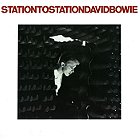 Posted : 15 years, 6 months ago on 24 November 2009 07:39
(A review of Station to Station)
Posted : 15 years, 6 months ago on 24 November 2009 07:39
(A review of Station to Station)David Bowie was deep into his cocaine addiction when he recorded Station to Station, and the album’s art school pretensions and emotional detachment speak to that. The fact that it is also an avant-garde masterpiece is due to his musical genius.
Prior to his Bowie had recorded ‘plastic soul’ albums like Young Americans and he was about to transfer to his Berlin period. Station to Station is the exact moment of transition. With only six songs and only one under the five minute mark, it’s not an easy album to listen to but it is highly rewarding.
His latest character is ‘The Thin White Duke,’ who is introduced to us on the opening title track. That regal-yet-detached character summarizes the entire album. If Kraftwerk had decided to record an album of James Brown material, it might have sounded like something similar to this. Bowie’s one hell of a singer, and he gives every song a specific voice and character, but his actorly mannerisms are at full force here. If he sounded anymore distant and artificial on “Stay” or “Word on a Wing” he might as well have not even shown up in the studio. I adore him for it. “TVC15” sounds like his vocal was beamed in from outer space, “TVC15” is also the track which points most obviously to the transition ahead. While the famous single, “Golden Years,” carries on the artificial R&B crooning of the previous albums, “TVC15” sounds robotic in every sense of the word. Low and Heroes seem like more obvious destination points after listening to that song.
I have stated it a few times, but I feel like it needs to be hammered in: this is not an album for everyone, but if it sounds even remotely interesting I encourage you to check it out. David Bowie is an artist who just so happens to make music. He appropriates and throws off styles, characters, mannerisms and obsessions with a skill and speed matched only by his most famous offspring, disco queen Madonna. Long before she was doing it, Bowie was there doing it with more theatrical abandon than anyone else. His albums are layered, dense, rich works of art. How Station to Station got to No. 3 on the charts is anyone’s guess. DOWNLOAD: “TVC15”
Prior to his Bowie had recorded ‘plastic soul’ albums like Young Americans and he was about to transfer to his Berlin period. Station to Station is the exact moment of transition. With only six songs and only one under the five minute mark, it’s not an easy album to listen to but it is highly rewarding.
His latest character is ‘The Thin White Duke,’ who is introduced to us on the opening title track. That regal-yet-detached character summarizes the entire album. If Kraftwerk had decided to record an album of James Brown material, it might have sounded like something similar to this. Bowie’s one hell of a singer, and he gives every song a specific voice and character, but his actorly mannerisms are at full force here. If he sounded anymore distant and artificial on “Stay” or “Word on a Wing” he might as well have not even shown up in the studio. I adore him for it. “TVC15” sounds like his vocal was beamed in from outer space, “TVC15” is also the track which points most obviously to the transition ahead. While the famous single, “Golden Years,” carries on the artificial R&B crooning of the previous albums, “TVC15” sounds robotic in every sense of the word. Low and Heroes seem like more obvious destination points after listening to that song.
I have stated it a few times, but I feel like it needs to be hammered in: this is not an album for everyone, but if it sounds even remotely interesting I encourage you to check it out. David Bowie is an artist who just so happens to make music. He appropriates and throws off styles, characters, mannerisms and obsessions with a skill and speed matched only by his most famous offspring, disco queen Madonna. Long before she was doing it, Bowie was there doing it with more theatrical abandon than anyone else. His albums are layered, dense, rich works of art. How Station to Station got to No. 3 on the charts is anyone’s guess. DOWNLOAD: “TVC15”
 0 comments, Reply to this entry
0 comments, Reply to this entry
White Light/White Heat
 Posted : 15 years, 6 months ago on 24 November 2009 07:39
(A review of White Light/White Heat)
Posted : 15 years, 6 months ago on 24 November 2009 07:39
(A review of White Light/White Heat)More so than other of the other Velvet Underground releases White Light/White Heat delves more into the proto-punk and early metal and industrial rock grooves that the Velvets would go on to inspire. With only six noisy tracks, White Light/White Heat proves that great music doesn’t need to be radio friendly to prove its worth. In fact, some of the best music has been ignored by radio, just ask Lou Reed.
The Velvets were always inspired by the narcotic overdrive of the Beats, especially William Burroughs’ heroin fog of a ‘novel’ Naked Lunch, and the soulful pop of Motown, the primitive country rock & roll of the Sun Records boys and the Phil Spector Wall of Sound. White Light/White Heat takes all of those influences and refuses to polish them off, leaving behind dirty and trashy avant-garde experiments.
“The Gift” barely qualifies as a song, or even anything close to resembling one. As John Cale reads a short story, or possibly a narrative poem, the rest of the band creates a noisy jam session soundtrack that has nothing to do with the story unfolding. The one song that sounds even remotely like a real song is “Here She Comes Now,” and it’s oddly the least interesting track here. It’s not a bad song by any means, but compared to the drug-and-sex fueled “Sister Ray” or the you-are-there amphetamine trip of the title track, “Here She Comes Now” plays its very safe. And “I Heard Her Call My Name” bounces back and forth between the dingiest of metal guitar grooves and almost-pretty verses.
While the title track is my personal favorite song on this set, the closing seventeen-plus minutes of “Sister Ray” have to be heard to be believed. Over churning, crunching, looping and droning skuzzy dirty-bomb guitars, Lou Reed delivers a…well, something about drugs and dark, disturbed sexual dalliances. I’m not quite sure what it’s all about, but I do know that it’s responsible for the punk rock movement, and for that I am thankful. Every Velvet Underground studio album is top of the line and amazing. White Light/White Heat is no different. DOWNLOAD: “Sister Ray”
The Velvets were always inspired by the narcotic overdrive of the Beats, especially William Burroughs’ heroin fog of a ‘novel’ Naked Lunch, and the soulful pop of Motown, the primitive country rock & roll of the Sun Records boys and the Phil Spector Wall of Sound. White Light/White Heat takes all of those influences and refuses to polish them off, leaving behind dirty and trashy avant-garde experiments.
“The Gift” barely qualifies as a song, or even anything close to resembling one. As John Cale reads a short story, or possibly a narrative poem, the rest of the band creates a noisy jam session soundtrack that has nothing to do with the story unfolding. The one song that sounds even remotely like a real song is “Here She Comes Now,” and it’s oddly the least interesting track here. It’s not a bad song by any means, but compared to the drug-and-sex fueled “Sister Ray” or the you-are-there amphetamine trip of the title track, “Here She Comes Now” plays its very safe. And “I Heard Her Call My Name” bounces back and forth between the dingiest of metal guitar grooves and almost-pretty verses.
While the title track is my personal favorite song on this set, the closing seventeen-plus minutes of “Sister Ray” have to be heard to be believed. Over churning, crunching, looping and droning skuzzy dirty-bomb guitars, Lou Reed delivers a…well, something about drugs and dark, disturbed sexual dalliances. I’m not quite sure what it’s all about, but I do know that it’s responsible for the punk rock movement, and for that I am thankful. Every Velvet Underground studio album is top of the line and amazing. White Light/White Heat is no different. DOWNLOAD: “Sister Ray”
 0 comments, Reply to this entry
0 comments, Reply to this entry
The Singles 1992 – 2003
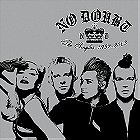 Posted : 15 years, 6 months ago on 24 November 2009 07:39
(A review of The Singles 1992-2003)
Posted : 15 years, 6 months ago on 24 November 2009 07:39
(A review of The Singles 1992-2003)Even more so than Rock Steady, The Singles 1992 – 2003 proves that No Doubt are my generation’s version of and answer to Blondie’s legacy. They’ve got the same downtown glamour (this time it’s California instead of New York), genre-hopping skills, and songwriting muscle. At times they even resemble the Police or English Beat, some of the greatest New Wave groups to ever come along.
I would have preferred for the song selection to have been in chronological order, which would have highlighted the band’s development and muscular growth over the years, and for the inclusion of the rest of the singles from No Doubt and any of the singles from The Beacon Street Collection, but what is here are all of the biggest hits. From the opening Devo-like guitar intro of “Just a Girl” to the closing overly-caffeinated third-wave ska of “Trapped in a Box” not a major radio hit is missing.
I would have preferred for the song selection to have been in chronological order, which would have highlighted the band’s development and muscular growth over the years, and for the inclusion of the rest of the singles from No Doubt and any of the singles from The Beacon Street Collection, but what is here are all of the biggest hits. From the opening Devo-like guitar intro of “Just a Girl” to the closing overly-caffeinated third-wave ska of “Trapped in a Box” not a major radio hit is missing.
The non-chronological order does make the second half very ballad heavy. The first ballad doesn’t appear until eight songs in, and it’s the mid-tempo bouncy ska of “Underneath It All,” and there are only fifteen tracks. While "Underneath It All" is a lovely reggae song, an insecure love poem with a guest toast from Lady Saw, it's presence at the halfway mark throws the flow of the album out of joint. After this, the tracklist alternates between a rave-up and a ballad, culminating in the back-to-back appearance of "Don't Speak" and "Simple Kind of Life" at the close. But the presence of extensive liner notes and the gorgeous silver, black and white color scheme make the entire package highly attractive.
The lone new song, a cover of Talk Talk’s 1984 hit “It’s My Life,” follows that band’s original version almost to the hilt. Very little is added to make the track more distinctive, but Gwen’s breathy sighs and confident vocal delivery make it a charming cover none the less. The playful video didn’t hurt things either. I love their cover, but still prefer the original.
While they were lumped in with the short lived mid-90s ska craze, No Doubt was always a New Wave band at heart. The delicate music box of “Running,” the hard-driving “Hella Good,” the rockabilly swagger of “Excuse Me Mr.” and the robotically assembled rocker “New” all point towards first generation New Wave acts like Blondie, Elvis Costello or Talking Heads as reference points. Not to say that the squealing vocals and reggae bounce of songs like “Sunday Morning” or “Spiderwebs” don’t point towards the Specials or Madness, but the band has always been rooted in New Wave as an entire movement which encompassed the punks, the ska kids, the New Wavers, and the rockabilly kids.
If you’re not interested in getting any of No Doubt’s studio albums and only want their most well known songs then this will do the exact trick. Otherwise, this works as a great introduction to the band. After this I suggest checking out Everything in Time to hear what didn’t make their biggest albums, and checking out everything between Beacon Street and Rock Steady. Some of their best songs weren’t the singles.
DOWNLOAD: “It’s My Life,” “Bathwater,” “Trapped in a Box”
The lone new song, a cover of Talk Talk’s 1984 hit “It’s My Life,” follows that band’s original version almost to the hilt. Very little is added to make the track more distinctive, but Gwen’s breathy sighs and confident vocal delivery make it a charming cover none the less. The playful video didn’t hurt things either. I love their cover, but still prefer the original.
While they were lumped in with the short lived mid-90s ska craze, No Doubt was always a New Wave band at heart. The delicate music box of “Running,” the hard-driving “Hella Good,” the rockabilly swagger of “Excuse Me Mr.” and the robotically assembled rocker “New” all point towards first generation New Wave acts like Blondie, Elvis Costello or Talking Heads as reference points. Not to say that the squealing vocals and reggae bounce of songs like “Sunday Morning” or “Spiderwebs” don’t point towards the Specials or Madness, but the band has always been rooted in New Wave as an entire movement which encompassed the punks, the ska kids, the New Wavers, and the rockabilly kids.
If you’re not interested in getting any of No Doubt’s studio albums and only want their most well known songs then this will do the exact trick. Otherwise, this works as a great introduction to the band. After this I suggest checking out Everything in Time to hear what didn’t make their biggest albums, and checking out everything between Beacon Street and Rock Steady. Some of their best songs weren’t the singles.
DOWNLOAD: “It’s My Life,” “Bathwater,” “Trapped in a Box”
 0 comments, Reply to this entry
0 comments, Reply to this entry
Most of All -- The Best Of
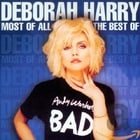 Posted : 15 years, 6 months ago on 24 November 2009 07:36
(A review of Most Of All - The Best Of)
Posted : 15 years, 6 months ago on 24 November 2009 07:36
(A review of Most Of All - The Best Of)Most of All: The Best of Deborah Harry delivers on the title’s promise, the only problem is that Debbie Harry’s solo output was wildly uneven on a good day. So while with one or two exceptions, where’s “Liar Liar”?, this is the best collection of her biggest solo singles and appearances.
The first three songs are pure dance-pop magic. “I Want That Man” is just as kitschy and pure fun as when it first came out. “French Kissin’ in the USA” retains its cutesy New Wave synth-pop core. It’s also slightly hypnotic in its laid back and mellowed vocal delivery. “Brite Side” is the closest thing to a ballad on this collection, and it’s a great slice of late-80s/early-90s pop. After that the rest of the compilation starts to dip in quality. “Feel the Spin,” “The Jam Was Moving” and “Rush Rush” remain great fun, even slightly naughty and subversive, but the some of it is just too anemic to be great dance music. Which is a problem since this music was obviously targeted at the club-minded audience.
Although a few of the tracks prove that she could have gone into different, possibly more fruitful paths. “Well Did You Evah” from the Red Hot + Blue AIDS benefit is a good time to be had by all. Iggy Pop, one of the greatest and most underappreciated elder statesmen of alternative rock, duets with Harry on a Cole Porter song. You can practically hear them cracking up at each other in the studio. Perhaps Debbie Harry should have tried to sing the American songbook and add her own downtown glamour to the recordings. There’s a great cover of “Stormy Weather” from a different compilation that proves she’s got the muscle and attitude to do something surprising with it. “Rock Bird” is a rocking synth-pop song. Maybe Harry should have played around more in the trashy New Wave which she helped pioneer, create and bring to the mainstream with Blondie. Whereas Blondie was all glamour, chic and sophisticated, “Rock Bird” has more in common with her spiritual offspring like Berlin or Missing Persons. This isn’t a bad thing since Harry can do it with more brains, sass and vocal talent.
I love Debbie Harry. No other musical icon has entertained me, thrilled me or influenced me quite as much as she has. I fully admit that her solo career as a singer is difficult to support, but her work with Blondie and influence on the music industry cannot be challenged. There’s much to love and admire about this collection, even if you have to sit through some duds to get to it. DOWNLOAD: “Rush Rush,” “I Want That Man,” “Feel the Spin”
The first three songs are pure dance-pop magic. “I Want That Man” is just as kitschy and pure fun as when it first came out. “French Kissin’ in the USA” retains its cutesy New Wave synth-pop core. It’s also slightly hypnotic in its laid back and mellowed vocal delivery. “Brite Side” is the closest thing to a ballad on this collection, and it’s a great slice of late-80s/early-90s pop. After that the rest of the compilation starts to dip in quality. “Feel the Spin,” “The Jam Was Moving” and “Rush Rush” remain great fun, even slightly naughty and subversive, but the some of it is just too anemic to be great dance music. Which is a problem since this music was obviously targeted at the club-minded audience.
Although a few of the tracks prove that she could have gone into different, possibly more fruitful paths. “Well Did You Evah” from the Red Hot + Blue AIDS benefit is a good time to be had by all. Iggy Pop, one of the greatest and most underappreciated elder statesmen of alternative rock, duets with Harry on a Cole Porter song. You can practically hear them cracking up at each other in the studio. Perhaps Debbie Harry should have tried to sing the American songbook and add her own downtown glamour to the recordings. There’s a great cover of “Stormy Weather” from a different compilation that proves she’s got the muscle and attitude to do something surprising with it. “Rock Bird” is a rocking synth-pop song. Maybe Harry should have played around more in the trashy New Wave which she helped pioneer, create and bring to the mainstream with Blondie. Whereas Blondie was all glamour, chic and sophisticated, “Rock Bird” has more in common with her spiritual offspring like Berlin or Missing Persons. This isn’t a bad thing since Harry can do it with more brains, sass and vocal talent.
I love Debbie Harry. No other musical icon has entertained me, thrilled me or influenced me quite as much as she has. I fully admit that her solo career as a singer is difficult to support, but her work with Blondie and influence on the music industry cannot be challenged. There’s much to love and admire about this collection, even if you have to sit through some duds to get to it. DOWNLOAD: “Rush Rush,” “I Want That Man,” “Feel the Spin”
 0 comments, Reply to this entry
0 comments, Reply to this entry
Trampin'
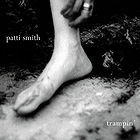 Posted : 15 years, 7 months ago on 19 November 2009 09:54
(A review of Trampin')
Posted : 15 years, 7 months ago on 19 November 2009 09:54
(A review of Trampin')Trampin’ is the first album that Patti Smith cut for Columbia, and it’s by turns just like the good ol’ Patti and a bit of a generic letdown. The album that this has the most in common with is Dream of Life. It’s not a vivid and wild declaration of her artistry, influence and might, but a simple waving of her hand to show that she’s still around.
Trampin’ does have its moments though. “Gandhi” is the kind of insane, nearly spoken word poetic narrative over noisy rock guitars that she's known for. (In this case, it’s either a biography or an extended metaphor, possibly a combination of both?) “Trespasses” is a beautifully performed, written and sung ballad. “My Blakean Year” marries her love of rock with her penchant for self-mythologizing and love of poetry. “My Blakean Year” comes closest to achieving her rock as revolution and spiritual revelation ideology. And “Peaceable Kingdom” which is largely acoustic and free-flowing thoughts about politics, war, Utopian ideals and dreams, it’s an exquisite piece of music and it is continually growing and changing throughout its five minutes.
Opening tracks “Jubilee” and “Mother Rose” are lyrically great, but musically flat. They’re stuck in melodies and productions that are nothing but generic. They deserve better. But, like her spiritual poet-rockers Bob Dylan and Joni Mitchell, she often overreaches yet you respect her for trying. I would rather hear one of them experiment wildly and create something decent, for them, than the latest auto-tuned pop tart. This is real music performed by a real musician.
On Dream of Life Patti Smith sang that “People have the power,” but it’s really Patti who’s got the power. The power to move, create, to make you think, to confound and challenge you. She is a remarkable artist. Yes, even when she creates something that doesn’t excite me the way Horses, Easter, Gone Again or Gung Ho do. Every album by her is worth, at least, one listen. DOWNLOAD: “My Blakean Year”
Trampin’ does have its moments though. “Gandhi” is the kind of insane, nearly spoken word poetic narrative over noisy rock guitars that she's known for. (In this case, it’s either a biography or an extended metaphor, possibly a combination of both?) “Trespasses” is a beautifully performed, written and sung ballad. “My Blakean Year” marries her love of rock with her penchant for self-mythologizing and love of poetry. “My Blakean Year” comes closest to achieving her rock as revolution and spiritual revelation ideology. And “Peaceable Kingdom” which is largely acoustic and free-flowing thoughts about politics, war, Utopian ideals and dreams, it’s an exquisite piece of music and it is continually growing and changing throughout its five minutes.
Opening tracks “Jubilee” and “Mother Rose” are lyrically great, but musically flat. They’re stuck in melodies and productions that are nothing but generic. They deserve better. But, like her spiritual poet-rockers Bob Dylan and Joni Mitchell, she often overreaches yet you respect her for trying. I would rather hear one of them experiment wildly and create something decent, for them, than the latest auto-tuned pop tart. This is real music performed by a real musician.
On Dream of Life Patti Smith sang that “People have the power,” but it’s really Patti who’s got the power. The power to move, create, to make you think, to confound and challenge you. She is a remarkable artist. Yes, even when she creates something that doesn’t excite me the way Horses, Easter, Gone Again or Gung Ho do. Every album by her is worth, at least, one listen. DOWNLOAD: “My Blakean Year”
 0 comments, Reply to this entry
0 comments, Reply to this entry
The Ronettes: The Early Years
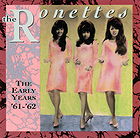 Posted : 15 years, 7 months ago on 19 November 2009 09:54
(A review of The Ronettes: The Early Years)
Posted : 15 years, 7 months ago on 19 November 2009 09:54
(A review of The Ronettes: The Early Years)The Early Years doesn’t feature any songs that rival anything the Ronettes cut with Phil Spector, but they do showcase the foundations of their sound and them working out the kinks. If anything, it’s worth a few spins just to hear Ronnie Spector belt it out. At times they sound like the Chiffons or the Exciters, but Ronnie’s voice makes them more distinct and individual. While these might not be as great as “Be My Baby,” “Walking in the Rain” or “Baby I Love You,” they are no less necessary to the mystique, glamour and legend behind the Ronettes. It’s always interesting and revealing to hear the origins and growing pains of any musical icon. DOWNLOAD: “I’m Gonna Quit While I’m Ahead”
 0 comments, Reply to this entry
0 comments, Reply to this entry
Confessions on a Dancefloor
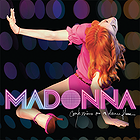 Posted : 15 years, 7 months ago on 16 November 2009 08:02
(A review of Confessions on a Dance Floor)
Posted : 15 years, 7 months ago on 16 November 2009 08:02
(A review of Confessions on a Dance Floor)With American Life having been a stateside failure, Madonna did what any smart businesswoman or politician would do: cut her losses and appealed to her constituency. In this case, that would be the (mostly gay) clubs that got her started way back in the late 70s/early 80s. Confessions on a Dancefloor isn’t just a fluffy piece of disco-pop. While it’s not quite at the level of Like a Prayer or Ray of Light, it is just a tiny bit below Music. To phrase that in non-fan terms: it’s a great album from the reigning Queen of Pop.
The opening shot of “Hung Up” remains one of her greatest moments as an artist. From that ABBA sample to those sassy lyrics, the Madonna from the 80s made a comeback and there’s no denying her. And “I Love New York” has a almost-Stooges flavor, if, you know, the Stooges had layered synthesizers upon their hard-hitting guitars. It’s a return of the Madonna brassiness that made her a superstar in the first place, don’t try and over think it, just go with her. “Future Lovers” with it’s Donna Summer sample and spoken-word segments sounds like an instructional video for the kind of dance-inspired spirituality she’s been talking about for the past few years.
“Get Together” and “Forbidden Love” move along on slinky ambient electronic grooves which reference her past, past dance hits and other artists in the electronic field when she first appeared on the scene. And “Like It Or Not” works as the album’s closer simply because it sounds like Madonna’s philosophy for living, even if it is a string of clichés. Her vocal performance and attitude make it work. While “How High” and the sublimely beautiful “Isaac,” which sounds to me like the story of Isaac from the Bible and not the Kabbalist icon, create a Middle Eastern disco genre that create two of the best moments on the album. Madonna’s best moments are always when she explores spirituality through the transitive power and nature of music, dance and love. Confessions is full of these kind of moments.
I absolutely loved Confessions when it first came out, and I still do. It’s definitely one of my favorite Madonna albums. It’s a delicious mixture of Donna Summer inspired disco and ABBA-licious good times. DOWNLOAD: “Hung Up”
The opening shot of “Hung Up” remains one of her greatest moments as an artist. From that ABBA sample to those sassy lyrics, the Madonna from the 80s made a comeback and there’s no denying her. And “I Love New York” has a almost-Stooges flavor, if, you know, the Stooges had layered synthesizers upon their hard-hitting guitars. It’s a return of the Madonna brassiness that made her a superstar in the first place, don’t try and over think it, just go with her. “Future Lovers” with it’s Donna Summer sample and spoken-word segments sounds like an instructional video for the kind of dance-inspired spirituality she’s been talking about for the past few years.
“Get Together” and “Forbidden Love” move along on slinky ambient electronic grooves which reference her past, past dance hits and other artists in the electronic field when she first appeared on the scene. And “Like It Or Not” works as the album’s closer simply because it sounds like Madonna’s philosophy for living, even if it is a string of clichés. Her vocal performance and attitude make it work. While “How High” and the sublimely beautiful “Isaac,” which sounds to me like the story of Isaac from the Bible and not the Kabbalist icon, create a Middle Eastern disco genre that create two of the best moments on the album. Madonna’s best moments are always when she explores spirituality through the transitive power and nature of music, dance and love. Confessions is full of these kind of moments.
I absolutely loved Confessions when it first came out, and I still do. It’s definitely one of my favorite Madonna albums. It’s a delicious mixture of Donna Summer inspired disco and ABBA-licious good times. DOWNLOAD: “Hung Up”
 0 comments, Reply to this entry
0 comments, Reply to this entry
 Login
Login
 Home
Home 95 Lists
95 Lists 1531 Reviews
1531 Reviews Collections
Collections